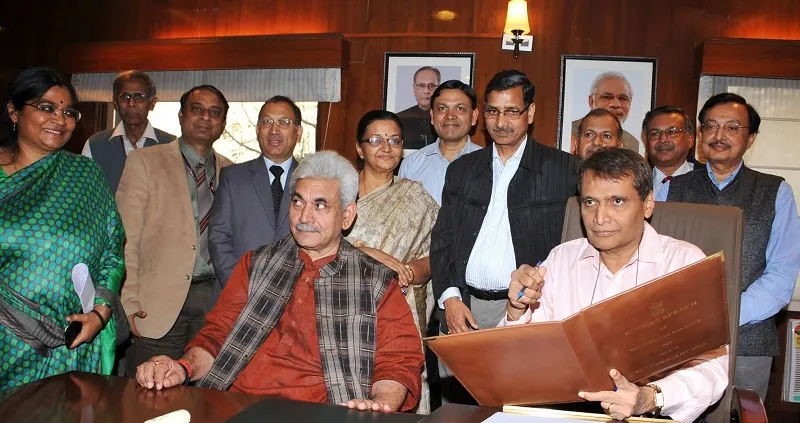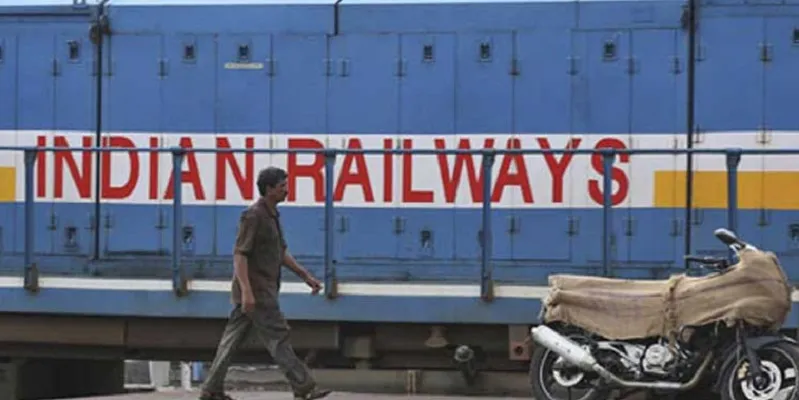After merger of budget, Rail ministers to lose clout, Maharaja status
The Railway budget will be merged with the general budget from the next fiscal. This means that Finance Minister Arun Jaitley will present the railway budget along with the general budget.
A separate rail budget had been a 92-year-old tradition, which is usually presented two days before the general budget. In September, the union cabinet cleared its merger with a rider that the functional autonomy of the Railways be maintained.
The end of a separate budget will be a relief for the Railways, since its revenue deficit will now be transferred to the finance ministry. From now on, the Railway minister who enjoyed a greater degree of clout and independence in decision making within the railways, a vast entity, will be like just another union minister waiting with bated breath to see whether Jaitley would have included his proposals or not.

The merger may not matter much to the current Railway Minister Suresh Prabhu, who in fact was an active proponent to do away with a separate railway budget, but it will definitely affect the prestige, pomp and decoration attached to being a railway minister in future, given the men and women who wore the crown in the past.
The egos of Lalu Prasad Yadav, Nitish Kumar, Mamata Banerjee, Ram Vilas Paswan will be severely hurt as they made the best of the opportunity and became showmen in their own right as railway ministers doling out favours like modern day royalty on their subjects.
Some parties, partners in the UPA, held onto the ministry as if it was their personal fiefdom.
Lalu Prasad Yadav too held onto the railways and even claimed that he had turned the behemoth around which added brownie points to his sagging image of a corrupt politician.
“A historic step. This will help raise capital expenditure in Railways, which will enhance connectivity in the country and boost economic growth. Functional autonomy, distinct identity of railways will remain as it is. Our efforts to leverage extra budgetary resources will continue,” was Suresh’s reaction to the cabinet merging both the budgets.
“Personally, I feel very sad,” says Prakash Mandoth, Director, Federation of Karnataka Chamber of Commerce and Industry. Prakash was single-handedly responsible for increasing the number of trains between Bengaluru and several far-flung cities and towns across India. He has met every railway minister with a lengthy petition as an ordinary citizen. His persistence and passion led Mamata to name him as a member of the Karnataka State Railway Users’ Committee.
“The railway budget had a special significance and sentiment attached to it as every citizen would look forward to it just to see what was in it for them in their region. It gives happiness to so many people. As it is the backbone of our economy, if the government feels it is a good move, so be it,” Prakash says rather resignedly.
Prakash says every citizen had an expectation that they will get something in the railway budget unlike the general budget. He fondly remembers time spent with railway ministers who included Nitish, Mamata, Ram Naik, O. Rajagopal, Bangaru Laxman, Lalu Prasad Yadav, Mallikarjun Kharge and even Suresh.
Railway ministers loved the attention they got and the powers they had. Like a Maharaja of yore and their powers extended all over India as the ministry touched people’s lives daily carrying 8.1 billion passengers and 1.107 billion tonnes of freight a year on a route length of 67,31 km.

Give petition, will grant wish
All that the minister needed was a representation and they were powerful enough to grant new trains, extend them, regularise summer specials, turn weeklies into biweeklies and biweeklies into tri-weeklies and tri-weeklies into dailies, grant additional stops, speed up trains, add more compartments, announce new lines, announce conversion to broad gauge, order sections electrifications, track doubling, new passenger reservation counters.
Budget tilt
Every railway budget had a distinct stamp as it tilted heavily towards the minister’s constituency, party or region. Of course, they can grant political favours to their masters too. Like Lalu Prasad Yadav who gifted a rail coach factory to Congress President Sonia Gandhi’s constituency of Rae Bereli.
Job jamboree
The best part of being a railway minister was the ability to dole out jobs. Indian Railways employees over 13 lakh workers and is the world’s seventh largest utility employer. As it has one of the highest rates of retirement per year, the 21 Railway Recruitment Boards spread out across the country is forever busy recruiting for various posts from officers to gangmen.
A false ceiling called profit
When Lalu Prasad Yadav became railway minister in 2004, he decided against an increase in fares despite the railways reeling under losses. But, under his leadership he claimed to have turned around the organisation by making a profit of Rs 60,000 crore. This attracted management schools and it became a case study at IIMs. His popularity too soared as he was invited by Ivy League schools across the globe whom he addressed in Hindi.
This turnaround, the Comptroller and Auditor General (CAG) later held, was a cosmetic exercise as Lalu Prasad Yadav introduced a new practice of issuing a statement of cash and investible surplus to paint a rosy picture. The good thing was he banned plastic cups from railway premises and trains and replaced them with earthen cups to generate employment in rural areas. He introduced bio-toilets on trains and cushioned seats in general compartments to enhance comfort. He also introduced Garib Rath, a completely AC train where an experiment was made to accommodate three side berths which were later discontinued.
IRCTC is Mamata’s baby
Mamata fulfilled many of her promises to her home state of West Bengal by introducing new trains and hastening works that were in progress. She also proposed the Indian Railway Catering and Tourism Corporation which is the largest ticketing website and serves meals onboard trains.
In her second stint, by which time she had formed the All India Trinamool Congress, she was railway minister from May 2009-May 2011 and moved onto become West Bengal CM. Mamata had earlier got the taste of the ministry’s power and reach when she was rail minister between October 1999 and March 2001 during the Vajpayee years.
Back in debt
In 2009, her focus was again on West Bengal. She named a new class of superfast non-stop train as Duronto, which connected large cities. She also introduced women-only trains, a highly popular measure. But, many of her big ticket announcements never saw the light of day and put the PSU into debt on account of resorting to populist measures such as inaugurating many passenger trains. When she moved on to become West Bengal CM, she commented famously: “The way I am leaving the railways behind, it will run well. Don’t worry, my successor will get all my support.”
But, that was not to be. Her successor Dinesh Trivedi was removed by her after he presented his first budget in which he raised fares. She replaced him with Mukul Roy.
Ministry loses speed
After the TMC fell out with the Congress in September 2012, the Congress took over the ministry with CP Joshi (twice), PK Bansal and Mallikarjun sharing the responsibility for the balance years for a few months each.
D.V. Sadananda Gowda presented the first railway budget after the Modi-government came to power. He was soon replaced by Suresh.







